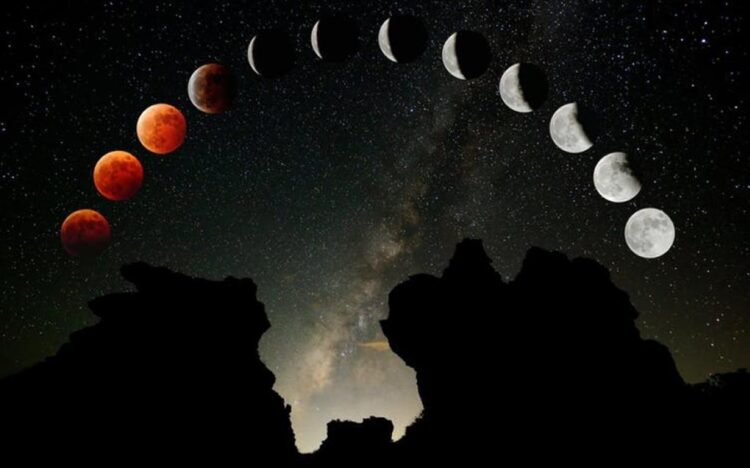The last lunar eclipse of the year will take place on the 28th of this month. A partial lunar eclipse can be seen from various parts of India. The last solar eclipse of the year occurred on the 14th of this month. The lunar eclipse will offer a unique midnight viewing experience, with the partial eclipse expected to last for over an hour.
The lunar eclipse will be visible across the Indian Ocean, Western Pacific, Atlantic Ocean, South Pacific Ocean, Asia, and Europe. According to reports from space.com, its visibility will extend to parts of Europe, Asia, Australia, Africa, North America, North/East South America, the Pacific, Atlantic, Indian Ocean, Arctic, and even Antarctica.
The Press Information Bureau (PIB) has said that the moon’s obscurity will be visible from all corners of India around midnight. While the penumbral phase is set to begin at midnight on October 28, the umbral phase will commence in the early hours of October 29.
According to NASA, “Lunar eclipses occur during the full moon phase. When Earth is positioned precisely between the Moon and Sun, Earth’s shadow falls upon the surface of the Moon, dimming it and sometimes turning the lunar surface a striking red over the course of a few hours. Each lunar eclipse is visible from half of Earth.”
Lunar eclipses come in three distinct types:
Total Lunar Eclipse: During a total lunar eclipse, the moon moves into the inner part of Earth’s shadow, known as the umbra. Some sunlight passing through Earth’s atmosphere reaches the moon’s surface, giving it a dim, eerie glow. The moon may appear orangish or reddish, with the extent of redness dependent on the presence of dust or clouds in Earth’s atmosphere.
Partial Lunar Eclipse: A partial lunar eclipse occurs due to an imperfect alignment of the Sun, Earth, and Moon, causing the Moon to pass through only part of Earth’s umbra. The shadow grows and then recedes without completely obscuring the moon.
Penumbral Eclipse: The most subtle of lunar eclipses, the penumbral eclipse occurs as the moon travels through Earth’s penumbra, the faint outer part of Earth’s shadow. The moon dims slightly, and it can be challenging to notice it with the naked eye.













Comments